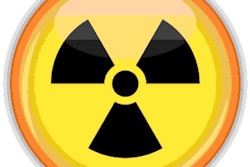
A survey of more than 80 general hospitals that perform nuclear medicine scans on pediatric patients shows the vast majority adhere to radiation-reducing protocols promoted by Image Gently and the 2010 North American guidelines, according to research published in the September issue of the Journal of Nuclear Medicine.
More than 80% of polled respondents stay within 20% of recommended radiation levels for pediatric imaging, while 55% have changed their protocols to comply with radiation-reducing standards. On the other hand, nearly one in five general hospitals is not familiar with the recommendations.
"What was impressive to us is that more than half the sites changed what they did based on the North American guidelines," said lead author Fred Fahey, DSc, director of physics in nuclear medicine and molecular imaging at Boston Children's Hospital. "So, in some ways we are pleased with the results, but there is still work to be done."
Radiation campaigns
Concerns about radiation exposure for pediatric patients date back to 2006, when the U.S. National Academy of Sciences released a study that concluded the risk for radiation-induced cancer may be two or three times greater for children than adults, in part based on tumor type, age, and gender.
 Frederic Fahey, DSc, from Boston Children's Hospital.
Frederic Fahey, DSc, from Boston Children's Hospital.In 2008, the Image Gently campaign was launched to raise awareness about pediatric radiation dose during CT scans. A group of pediatric radiologists who organized and presented a series of "as low as reasonably achievable," or ALARA, pediatric imaging seminars sponsored by the Society for Pediatric Radiology (SPR) provided the catalyst for the initiative.
By 2010, the SPR and the Society of Nuclear Medicine and Molecular Imaging had collaboratively crafted and published North American guidelines for standardized radiopharmaceutical doses in children and adolescents.
While facilities that specialize in pediatric care presumably are quite familiar with radiation-limiting protocols, most children are treated at general hospitals. That begs the question of how well-schooled these imaging departments are in scanning and administering radiotracers to young patients.
"We were not sure how much [Image Gently] had penetrated into general hospitals, so we were curious what the practices were," Fahey told AuntMinnie.com. "Secondly, did they know about Image Gently and the North American guidelines? And, if they did know about it, did that have any impact on how they practiced."
Survey of general hospitals
Fahey and colleagues invited general hospitals with more than 300 beds to participate in the web-based survey, hypothesizing that these larger facilities would be more likely to have a standalone nuclear medicine department. They received 121 replies (61%), of which 82 facilities (68%) indicated they perform nuclear medicine studies on pediatric patients (JNM, September 2016, Vol. 57:9, pp. 1478-1485).
Among 119 sites, 59 reported they were urban facilities (50%), 57 were suburban (48%), and three (2%) were rural. In addition, 62 of the 121 sites were community teaching hospitals (51%), 31 were large academic facilities (25%), 27 were community nonteaching hospitals (22%), and one was a government-affiliated facility.
Of the facilities that perform pediatric nuclear medicine studies, 82% were familiar with Image Gently and 57% were familiar with the 2010 North American guidelines. In addition, 55% had altered their pediatric imaging protocols because of the guidelines. Most interestingly, these percentages did not vary based on hospital type.
"We got the same results whether it be a community hospital, a teaching hospital with residents, or an academic center," Fahey said. "We couldn't quite get a sense as to why these people were compliant and familiar with guidelines and other people weren't. It appears to be the same across all the demographics we asked about."
To better gauge how the radiation-limiting guidelines were followed, the survey posed hypothetical scanning scenarios for a 5-year-old boy (20 kg, 110 cm) and a 10-year-old girl (30 kg, 140 cm). It asked what dosage the two patients would receive based on weight (MBq/kg), minimum and maximum dosage parameters, and other imaging considerations.
The two scenarios were posed for the five most common pediatric nuclear medicine procedures:
- Technetium-99m (Tc-99m) methylene diphosphonate (MDP) bone scan
- Tc-99m mercaptoacetyltriglycine (MAG3) renal scan
- Tc-99m dimercaptosuccinic acid (DMSA) renal scan
- Tc-99m hepatobiliary iminodiacetic acid (HIDA) derivative scan
- FDG-PET scan
Promising results
Approximately 60% of the hospitals were within 20% of radiation guidelines for all five imaging procedures, the researchers found. However, there was a wide range of compliance based on the five mock scenarios. Tc-99m MDP bone scans had the highest percentage of facilities in compliance (85%), followed by Tc-99m DMSA scans (79%), FDG-PET (78%), Tc-99m HIDA scans (62%), and Tc-99m MAG3 scans (59%).
"We determined that being within 20% of the guidelines was considered in compliance," Fahey explained. "It is a bit arbitrary, but the Nuclear Regulatory Commission says if you are within 20% of what is prescribed, then you are still in compliance."
As a follow-up to this paper, Fahey and colleagues plan to conduct a survey of pediatric hospitals on the use of CT as part of PET/CT scans. And, of course, they will continue to educate clinicians and physicians who are not familiar with Image Gently and the North American radiation guidelines.
"A good number of sites are doing a good job, but there is still some variability among them," he added. "We need to figure out how to reach out to them and get them the guidelines in order to minimize the variability and ensure they are doing a good job with kids."



















